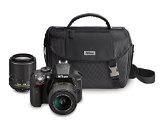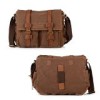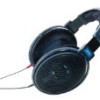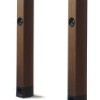Nikon D3300 DX-format DSLR Kit w/ 18-55mm DX VR II & 55-200mm DX VR II Zoom Lenses and Case (Black)
Nikon D3300 DX-format DSLR Kit w/ 18-55mm DX VR II & 55-200mm DX VR II Zoom Lenses and Case (Black)
- 24.2 MP CMOS DX-format sensor
- 5 frames per second continuous shooting
- 11 AF points with 3D tracking
- ISO 100-12800 (expandable to 25600)
- 1080 (60, 50, 30, 25, 24 fps) HD video (MPEG-4/H.264/MOV)
- 3 inch LCD with 921,000 dots
- Expeed 4 processing
- Easy panorama mode and beginner-friendly Guide mode
- Wi-Fi enabled with WU-1a Wireless Adapter and compatible smartphone or tablet (not included)
- SD/SDHC/SDXC memory
Capture every special moment in the lifelike quality it deserves–and have a great time doing it! With its included zoom lens, the new ultra-compact AF-S DX NIKKOR 18-55mm f/3.5-5.6G VR II, the D3300 is a small, easy to use HD-SLR. Capture beautiful 24.2-MP photos and 1080p Full HD videos with vibrant colors and softly blurred backgrounds, then share them instantly with your compatible smartphone and the optional WU-1a Wireless Adapter. Whether you”re creating high-resolution panoramas, adding f
List Price: $ 496.95
Price:
Related Slr Camera Products
Similar Posts






Best Picture Quality of Most DSLR’s Today,
The Nikon D3300 has some of the best low light and best picture quality of mid level DSLR cameras, in the APS-C sensor size (this is not a full size sensor, but to get a full size sensor you will need to spend about $2000 or $3000 more).
Nikon D3300 is rated 30% higher in image quality compared to the Canon 70D.
The Nikon D3300 has a slightly larger sensor than the Canon 70D.
I was torn between Canon and Nikon. If you look at all the complaints about Canon in the last 1 or 2 years, you will see that they have been going backwards or sideways, while other companies are making huge strides. The Canon 70D is a smooth fast auto-focusing camera that is silent, however if you set it to auto mode and go take pictures they don’t look as good as the Nikon D3300 on auto mode.
Comparing pictures side by side with the Canon 70D, the Nikon D3300 has sharper pictures. Zooming in on the photos I took with the 70D yielded a loss of detail. At the same quality settings, same aperture, and shutter speed settings, and with the exact same scene, I am able to zoom in and get better photos from the Nikon D3300, the D3300 really captures crisp photos.
The D3300 may be the only camera that doesn’t have image quality problems with the 24 Megapixels. There is a megapixel war going on, although sensor sizes aren’t increasing, which means the image quality isn’t getting better with many cameras, because they are simply trying to cram more pixels with even less light per pixel, which doesn’t help matters. However, the D3300 pulls off the impossible and gets beautiful very sharp photos every time.
The D3300 does very good video, it’s glassy smooth and has tremendously good low light video performance, although the focus noise of the lens will intrude on your videos, because you can hear the little motor churning away to maintain focus. You can alternately use manual focus which works just fine for video. Or you can just push the focus button momentarily to get focus and then maintain your distance, and that will allow the lens to stop hunting for focus, which means you won’t hear any noise in your video. To eliminate video focus noise you will need an external mic. The auto focus isn’t super fast in video mode but it does have video auto focus mode, and if you had an external mic you could do simple documentaries or YouTube clips just fine and have very clean, very smooth video.
For video you could also consider a Sony HX-300 1080 60P, or the HX-400 which has 24P mode too. I’ve tried the HX-300 and it has nowhere near the low light performance of the Nikon D3300 but it does do really good video and has smooth, fast, silent auto focus, even at up to 50x zoom, which is ridiculous.
The Nikon D3300 takes noise free pictures in any lighting conditions (I haven’t tried in total darkness of course). I set it to auto on a black cloudy day, just before rain, and it takes extremely clear pictures with no noise. The same pictures in sunlight were much less sharp, on the Canon 70D. The Canon 70D may be able to match the Nikon if you manually tweak things, but the Nikon doesn’t take bad pictures on Auto mode, where as, the Canon 70D on Auto mode takes very average pictures.
I noticed the Canon 70D JPG pictures looked very digitized, and not natural, some were not even usable on auto mode, but the Nikon default JPG pictures look more natural. This is probably caused by better JPG compression on the Nikon? In “Raw” shooting mode I’m sure the Canon 70D has nearly equal image quality but I never did try that.
Something to note, the Nikon D3300 does not have a low pass filter on the sensor like most current DSLR’s, so in theory it should shoot sharper photos more easily. The purpose of the low pass filter is to slightly blur pixels to prevent artifacts, and moire. The Nikon figured out a way around this, so it can shoot sharper without a “blur” filter. Canon people don’t seem to care about anything except loyalty to one brand, so good luck explaining this to them! hehe.
This is a very small camera, I would say it feels about 50% smaller than a Canon 70D. It is very light. The buttons are all exceptional. The shutter is very loud as most DSLR cameras probably are. Taking pictures is as easy as turning it on and snapping photos. You’ll get amazing results in almost any lighting with this camera.
If you want the best quality pictures, and you want to step up to a professional camera without the professional price, here is the camera you want. Image quality is within 1 point of the Nikon D7100. The entry level Canon DSLR mid-frame cameras cannot match the image quality of the newest Nikons.
Purchase an 18-200mm lens in the future to give you wide angle room shots, or scenic shots at 18mm, or to zoom in, at 200mm. The stock lens works fine, but it doesn’t zoom in very far. That is something to consider in your…
Read more
Was this review helpful to you?

|For Potential Nikon Buyers,
Previously I owned Sony DSC F717 which was best in class back then and it still performs well, within its limits. So I would be making few comparisons along the way when necessary.
Let me cover the points which matters to me the most in this camera
Focus – I use spot focusing 99% of the time and its very accurate and rarely misses a shot. It can even lock on a subject with ease in challenging backgrounds.
View finder – While the focus is great, the view finder isn’t the best i’ve seen. For most part of my shooting, I find it sufficient but on some situations its not so great.
For example, when I trying to shoot a grey & black striped dragon fly sitting on a fungus infested wall, I could see where it was with my naked eye but through the view finder it was very hard to locate it. But then I was just barely able to see it with naked eye.
Also when shooting very bright subject, when shutter is half pressed the Red focus spot lighting up is barely visible but I work around this by checking the green spot which confirms focus which is clearly visible in the view finder.
OVF vs EVF – My previous camera had EVF which is very handy in direct sun light to check for focus on the images I just shot. So I will miss it in bright sunny conditions but I think I can manage by increasing lcd screen brightness in Nikon.
Focus points – I just use the center spot metering most of the time, so I dont really care much about 11 points vs 36 points etc.
Kit Lens – The kit lens is pretty good. It can do superb macro @55mm and is sharp at that focal length. The VRll is really effective in low light conditions where the shutter speed drops below 1/30.
I bought 35/1.8, assuming it will perform significantly better than the kit lens and the difference wasn’t that big as the kit lens held its own which I never expected to happen.
I tested by setting the 18-55 lens to 35mm and shot few pics of some flowers, distant objects etc. I did the same with the 35 mm/1.8 @ same aperture values and then compared them. The first thing to notice is the 18-55 gives you more in-focus shots which I believe is due to the VRll. The 35/1.8 looked ok on normal viewing but when looked at 100%, its just not so great and 18-55 won more times.
Even in low light situations, where the 1.8 aperture was supposed to perform better than the kit lens, it could not match what the VRll function could do at much slower shutter speeds.
There were photos where 35/1.8 had lesser noise in the out of focus areas but the kit lens had more in focus shots which I think matters the most.
Not to mention the chromatic aberration when wide open in high contrast scenes which is not so with the kit lens, probably due to the smaller aperture than the 35mm lens.
However when I can get higher shutter speeds (good light), the 35/1.8 gets better and with small apertures (over 5) it gets sharper than kit lens and picks up more finer details than the kit lens.
For portraits, I found 35mm @2.8 was sharp enough with pleasing results.
In low light, using a tripod gave impressive results with 35/1.8, which proved the kit lens’s VR function gives it the edge in low light for hand held shots.
Also the kit lens allowed for a much closer distance with the subject than the 35/1.8
The 35/1.8 was much better than kit lens for indoor video, where it has no noticeable noise indoors while you can see some noise with the 18-55 lens. The clarity also seemed better in video with the 35/1.8.
But then I may have very few situations where I go to the extent of switching the lens for a short video clip.
Just buy with the 18-55 kit lens which makes it super light and comfortable to use. If you want to upgrade, go for 18-140mm which will give better range with very similar image quality and doesn’t cost much. Get the 35/1.8 for price/performance and it can get some great shots in good light and some good ones in low light.
White Balance – This camera has the standard options for its class and the auto white balance is good enough to cover most situations. However when I did want to preset manually, I noticed it took about 10 seconds or so to get it done via the menus. The same could be done in 3to 4 seconds on my 8 year old Sony camera (DSC F717) as it has a direct button to set white balance manually. I just have to find anything that’s white and big enough to cover most of the frame and press that button and its set for that light. But with Nikon the same process takes much longer which discourages me to use that option often. However the auto white balance on Nikon is far superior to the old Sony I have.
Strangely the auto mode on Nikon seems to be more accurate than the manual setting in it.
ISO performance – For viewing pictures at normal size, even ISO 6400 is easily usable. But if you are going to crop at 100%, then…
Read more
Was this review helpful to you?

|Nikon D3300 Reviewed and Compared to the D5200,
I have been a fan of Nikon’s Entry level DSLR cameras including specifically the D3xxx and D5xxx series. All of these cameras have great image quality, are reasonably small and light with intuitive controls. Most of these Nikons improved with each new generation.
The Nikon D3300 is smaller and lighter than its predecessors, the D3200 and D3100. It is also considerably smaller and lighter than the D5200, the somewhat more advanced entry level Nikon DSLR. The biggest physical change in this kit is the new “VRii” 18-55mm lens. This new kit lens is smaller and lighter than its predecessor and ‘collapses’ into about 2/3 its size when not being used. Perhaps more significantly, this lens is sharper capturing more detail than the older kit lens.
The reduced size and weight of the D3300 appears to be Nikon’s response to Canon’s 100D/SL1. Although the SL1 and D3300 are about the same size and weight, the D3300 has a better/larger grip and is more comfortable (to me anyway) than the SL1.
Although the D3300 is the eventual replacement for the D3200, I purchased the D3300 in anticipation of replacing my D5200 assuming that this newer camera would have improved image quality over last year’s models. I was actually somewhat disappointed as I preferred the image quality of the older D5200. That is not to say that the D3300 is not an excellent camera because actually it is.
My testing was limited to still indoor shooting (it is already dark outside when I come home from work). I compared the D3300 to the D5200 shooting identical scenes using 3 different lenses under various lighting conditions.
Both cameras delivered excellent high ISO results with similar ISO performance through ISO 3200 (I really do not like shooting past ISO 3200). High ISO performance on the D3300 was better than its predecessor, the D3200. On the D3300 and D5200, ISO 800 is really indistinguishable from ISO 100. ISO 1600 is also very good on both cameras with some graininess/noise creeping in. ISO 3200 is usable but there is a definite degradation in image quality.
The reason I prefer the D5200 to the D3300 is white balance & color rendition. Both cameras have difficulties under incandescent lighting when using AWB (tip: use ‘sunny’ instead of AWB) especially when trying to render shades of yellow, but the D5200 did a better job. I felt the general color rendition of the D5200 was more natural especially in Caucasian skin tones. It seemed like the D3300 colors needed to be manually re-adjusted for many different lighting situations. Each of these cameras benefited from shooting raw with the JPGs of each camera being a bit too warm and under-sharpened. However, the JPGs rendered by the D5200 resulted in more pleasing colors than the D3300 (to me anyway).
The D3300 (like the D3100 & D3200) does not have some features which one would expect for a camera at this price including specifically a DOF preview; a movable LCD screen; any type of bracketing (wb bracketing could really be helpful with this camera); incremental ISO settings between stops (ie ISO 2000 which could be helpful in not using a higher than needed ISO setting). Each of the D5xxx models have all of these features.
The Menu system is familiar to anyone who has owned a Nikon DSLR in recent years. The LCD setting display/selector is similar to the one used on recent Nikons including the D5200. There is no dedicated WB or ISO button (although the FN button can be programmed for one of those or some other functions). There is no touch screen which I do not really care for anyway.
Although the D5200 has a more sophisticated autofocus system (several more AF points), I found the AF system to be similar on the D3300, that is to say very quick and accurate under all conditions. The 5 Frame per second continuous shooting capability is really fast.
The built in flash on this (and almost all cameras) is not very good. Light is unevenly distributed and can be quite harsh. An external flash with bounce capabilities (ie SB-400) greatly enhances exposure and color.
I really like the kit lens. I do not know it it is available for purchase separately. It is light and compact (especially when collapsed) and optically better than prior kit lenses.
I read about a “low pass filter” being removed in order to provide greater image detail. However, I honestly did not see any difference in the detail being captured by the D3300 over the D5200 even when using my best prime lens. In fact, it appeared that the D5200 captured slightly more detail than the D3300.
In summary, the D3300 is an excellent DSLR. Shooting raw and using an external bounce flash will enhance the quality of the photographs greatly. This camera is especially attractive for those who are seeking a small and light DSLR. Those who prefer something a bit more substantial or who…
Read more
Was this review helpful to you?

|